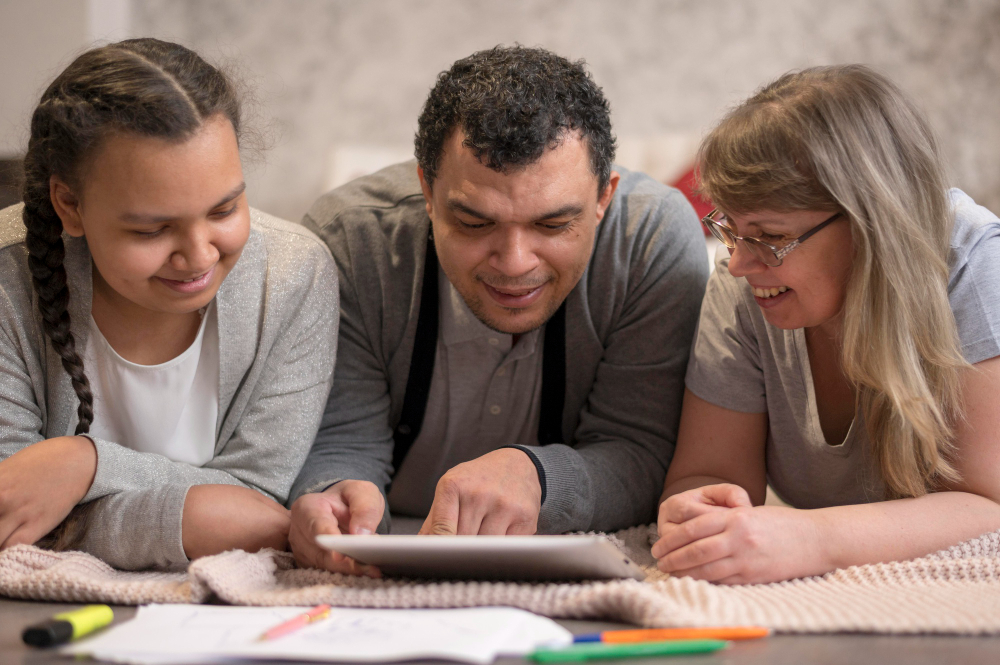Teaching and Learning Simultaneously
Our study showed that educators are focusing on individual digital capabilities which has caused the loss of chances to open
We are empowering you with free easy to read guides and key resources to stay up to date with your students digital safety.

Integrate digital safety lessons into existing subjects, fostering critical thinking and online problem-solving skills.
Guides can spark important discussions about cyberbullying, responsible online interactions, and protecting privacy.

Our research showed that this age group wanted to discuss with parents and teachers about becoming more independent on technology, but that these discussions were often ill-informed and often just focused on the basics of being safe online.

There are many stakeholders in a students education, and our research found that particularly parents can put pressure on each other about how their children use technology. As an educator you can help with this, as our findings suggest that knowledge is key, and parents discovered that as their knowledge grew so did their confidence.

As with all elements of parenting, parents have different parenting styles when guiding their children’s technology use and this impacts how schools discuss and negotiate children’s technology use. A consideration for schools is not to treat parenting technology use as a one-size-fits all approach. We found that there is no one exact strategy that will guide all young people’s technology use, there needs to be alternatives.

Educators were often concerned about their role as a teacher in ‘teaching’ students about eSafety. Our research found that educators don’t see their role as a teacher to teach eSafety and/or they are not ‘qualified’ to teach eSafety when they are grappling to learn about this concept themselves. This has indirectly caused the children to lose a strain of learning about eSafety in a formal manner (i.e., in school).

Between the ages of 10 and 13 years, children make big changes as technology users because of 3 important factors: phone ownership, starting high school, and becoming a teenager. Each has a different and important impact on their eSafety.

Our research found that parents decide that their children are ready for social media based on milestones like birthdays or entering a new year at school. Milestones do not necessarily equate with readiness and as an educator you need to be ready for children with different experiences and control in their use of social media in your classroom.
Our study showed that educators are focusing on individual digital capabilities which has caused the loss of chances to open
Our study found that in adolescence, children shifted from using technology under the supervision and/or approval of their parents to
Many of the parents in the study discussed the idea of a child being ‘ready’ for social media. This often